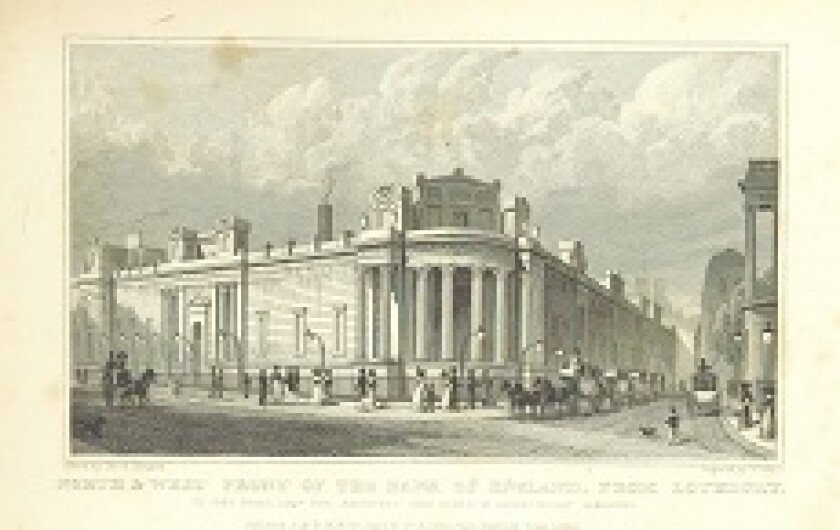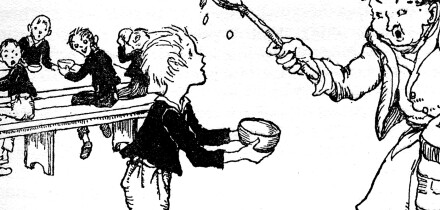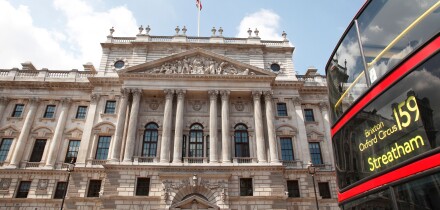by Professor Richard Roberts, King’s College London
During the Bank’s first 150 years, its short term rate fluctuated between 4% and 6%. The variation band widened from the 1840s as sterling and trade cycle management became more active.
New record lows of 2.5% in 1844 and 2% in 1852 reflected downturns, while the booms and busts of 1857 and 1866 saw highs of 10%. The bank rate was at 2% 16 times between 1862 and 1897, with the two decades from the mid-1870s to the mid-1890s the first cheap money era.
The context was falling commodity prices stemming from the opening phase of globalisation. During an unprecedented 2.5 year run at 2% in 1894-96, the price of British government bonds soared above previous highs while yields plumbed all-time lows.
Yield hungry investors piled into emerging markets and meretricious mining and technology plays.
During the 1920s, the bank rate was mostly in the range 4%-6.5%. Then came the Wall Street crash, the slump and a political crisis in summer 1931 that resulted in a national coalition with new economic policies — devaluation and tariffs, plus cheap money to encourage investment to boost jobs and growth. For two decades from 1932 — through the depression, Second World War and post-war reconstruction — the bank rate was 2%.
Cheap money had an unexpected, but welcome, effect — a housing boom.
Private sector house building soared from 133,000 in 1931 to 281,000 in 1936, much higher than any time before or since. Cheap money meant low costs for both builders and house buyers, with mortgages plentifully available; and with falling RPI, the real interest rate was negative for most of the 1930s.
The building boom kept house prices in check and much of the new supply was affordable; 85% of new houses sold for less than £750 (£45,000 in today’s money). A crucial factor was the abundance of land for building, since there were few land use restrictions, with trams, trolleys, motor buses and cars facilitating suburbanisation. The resulting housing boom made a major contribution to Britain’s recovery from recession, generating a third of the 4% annual GDP growth.
The cheap money policy was abandoned in 1951 in response to concern about inflation and a desire to broaden the policy toolkit.
Inflation and sterling pressures produced a bank rate of 4%-6% in the 1950s and 5%-7% in the 1960s.
Rampant inflation in the 1970s — RPI hit 25% in 1975 — drove the bank rate to 10%-14% in the middle of the decade and early 1980s, with a high of 17% in 1979. Inflation abated in the 1980s and the bank rate fell, though it was back at 14% in 1989. In the 1990s and first half of the 2000s, with an inflation-targeting independent central bank the prevalent monetary policy model, inflation fell and the bank rate returned to its classic range of 4%-7%.
A new post-crisis era of cheap money got underway in December 2007 with a mark down from 5.75% to 5.5%. It reached 2% in December 2008 and then hit record lows of 1.5% in January 2009 and 0.5% two months later.
How does today’s third cheap money era compare with its forerunners? Conspicuous by its absence is a housing boom, despite negative real interest rates since 2009 and strong demand demonstrated by upward house prices.
The key difference with the 1930s is not financial but bureaucratic and political — planning constraints on building and mortgage restrictions.
On the other hand, low rates have stimulated venturing along the risk curve in pursuit of yield, into frontier markets and alternative assets. So it was in the first cheap money era, one outcome being the Baring Crisis of 1890 — the first time Barings Bank went bust.
As rates rise, there may well be future chickens coming home to roost.
History shows that cheap money conditions can last for decades. In long term perspective, a shift from a 0.5% bank rate to a 2% rate is from very cheap money to plain vanilla cheap money. Cheap enough to stimulate an expansion of housing and infrastructure activity, if allowed to do so.







